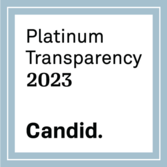Clean Ocean Advocate, March 2006
PCBs, FISH, AND HUMAN HEALTH
Updates & Proposals Show Need to Track-Down and Stop Sources of PCB Pollution in Marine Environment
Updated NJ Fish Consumption Advisories
At press time, the New Jersey Department of Environmental Protection (NJDEP) is scheduled to release their 2006 Fish Consumption Advisories. Recently, Clean Ocean Action (COA) attended a meeting with NJDEP officials who presented the new anticipated advisories. In these advisories, NJDEP prompts the public to weigh the risks versus benefits of eating recreational fish, which is a choice between the proven health benefits of eating fish and the risk of exposure to chemicals in fish, such as PCBs (polychlorinated
bi-phenyls) and Mercury. COA asked NJDEP to provide the technical data used to develop the advisories. It is important to note that these advisories are specific to certain regions and types of fish caught recreationally in New Jersey, and does not pertain to fish sold in fish markets and grocery stores.
For a list of last year’s NJDEP fish advisories, call 609-984-6071, or visit http://www.nj.gov/dep/dsr/njmainfish.htm. The 2006 advisories will also be posted on NJDEP’s website following their official release. New York also has fish consumption advisories; for a list, call 1-800-458-1158, or visit http://www.health.state.ny.us/nysdoh/fish/fish.htm.
What are PCBs?
PCBs (polychlorinated biphenyls) are mixtures of persistent synthetic organic chemicals that are products of industrial processes.
PCBs pose health risks to animals and humans.
Why are PCBs in fish?
Chemicals from industrial pipes and other sources dumped into waterways settle in sediments and attach to fatty tissues in marine life. PCBs travel up the food chain and are found in fish that humans consume.
Proposed Rules for Monitoring PCBs
The NJDEP proposed new rules for the discharge of PCBs to NJ’s surface waters from industrial and sewage treatment facilities.
The new rule would require “major facilities” to monitor their effluent for PCBs using a more sensitive analytical method. Based on monitoring results, NJDEP will determine whether the facility will be required to develop and implement a PCB Pollutant Minimization Plan (PMP). According to NJDEP, the new rule will focus on prevention instead of end-of-pipe monitoring. COA is pleased with the increased monitoring, but has serious concerns about the ability of the new rules to actually reduce PCBs entering NJ’s waterways.
In order to adequately eliminate and reduce PCBs, the PMP must be in addition to, not instead of, PCB limits on all effluent discharges. The new rule also lacks enforceable policies, public participation, and clear criteria on when and how the PMP would be implemented. COA submitted formal comments on the proposed rule that are available on our website.
GE Spent Millions to Avoid Cleanup of Hudson River PCBs
General Electric (GE) spent more than $65 million on lobbying, public relations, and legal advice while negotiating whether to dredge PCBs from the upper Hudson River. Last year, 27 percent of GE’s stockholders supported a resolution to force the company to detail its costs to oppose the estimated $500-700 million cleanup of the Hudson. GE reportedly spent $313.6 million on issues related to the cleanup from 1990-2005. GE legally dumped PCBs into the Hudson between the 1940s and 1970s, until the federal government banned their use due to adverse health impacts on fish and human health. Fifty percent of the PCBs in Lower New York Harbor are from GE’s upriver plants. The company is due to start the first phase of the dredging project in spring 2007. Adapted from The Journal News, January 11, 2006

